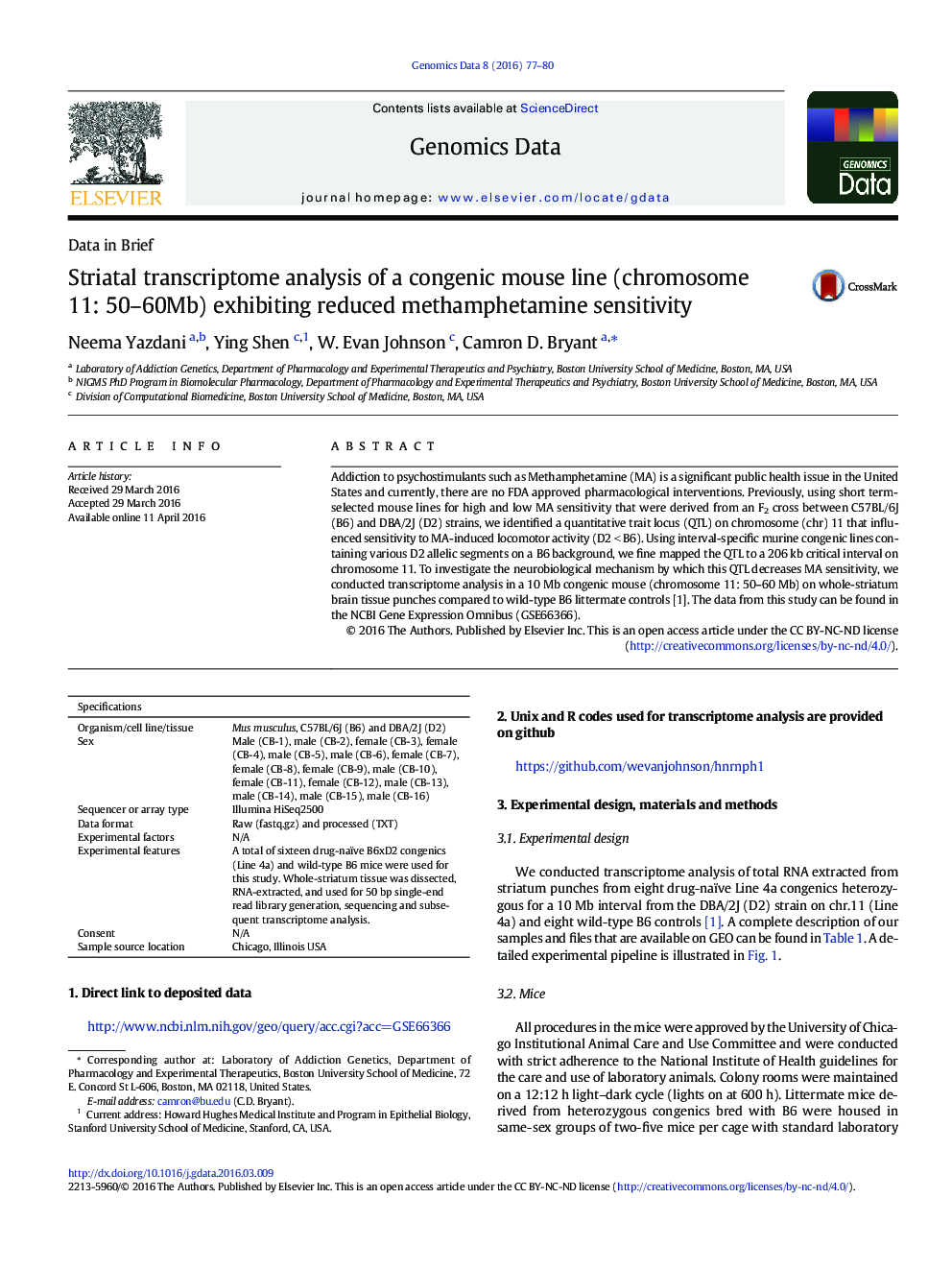| Article ID | Journal | Published Year | Pages | File Type |
|---|---|---|---|---|
| 2821927 | Genomics Data | 2016 | 4 Pages |
Addiction to psychostimulants such as Methamphetamine (MA) is a significant public health issue in the United States and currently, there are no FDA approved pharmacological interventions. Previously, using short term-selected mouse lines for high and low MA sensitivity that were derived from an F2 cross between C57BL/6J (B6) and DBA/2J (D2) strains, we identified a quantitative trait locus (QTL) on chromosome (chr) 11 that influenced sensitivity to MA-induced locomotor activity (D2 < B6). Using interval-specific murine congenic lines containing various D2 allelic segments on a B6 background, we fine mapped the QTL to a 206 kb critical interval on chromosome 11. To investigate the neurobiological mechanism by which this QTL decreases MA sensitivity, we conducted transcriptome analysis in a 10 Mb congenic mouse (chromosome 11: 50–60 Mb) on whole-striatum brain tissue punches compared to wild-type B6 littermate controls [1]. The data from this study can be found in the NCBI Gene Expression Omnibus (GSE66366).
